
One of the most common conversations I’ve had with our guests here at Horton Common over the years is about caravan nose weights. To achieve the best and safest towing performance from your car and caravan, you want to get the nose weight right and within the limits. The caravan itself has noseweight minimum and maxium values. However, your car also has its own maximum noseweight figure. So in this post, I’ll discuss various topics. First, how to find out the noseweight limits of your caravan and how to measure it. I’ll then discuss the noseweight limits of various cars. Just so you are aware, sometimes the noseweight is referred to as the ‘static vertical load’.
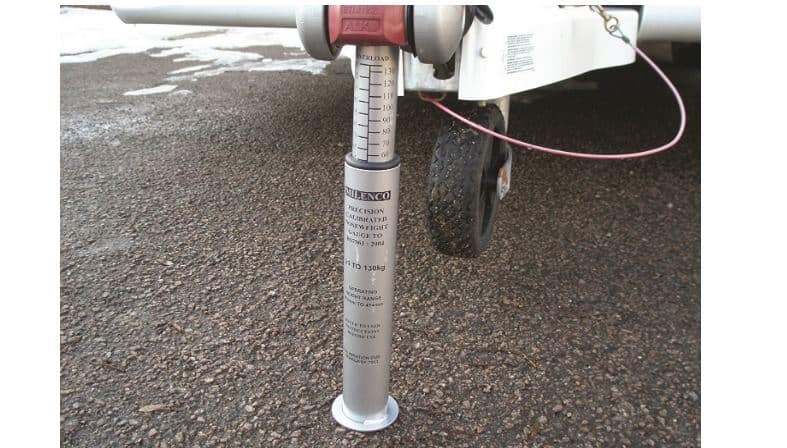
Disclaimer: Hey! By the way… any links on this page that lead to products on Amazon or Caravan Guard are affiliate links, and I earn a commission if you make a purchase, with no additional cost to you 🙂
- Dissolves waste and removes odours naturally and has delightful mild fragrance
Now, it can be tricky, frustrating and time-consuming to get the nose weight of your caravan within the limits.
However, its very important that you learn the best way to organise and load your caravan to keep the nose weight within the limits.
In a previous post, I wrote on how much do caravans weigh I did briefly discuss caravan nose weights. However, I wanted to make this post much more comprehensive on the topic.
As I often do, I’ll reference some videos you can watch and some applicable products you can consider. There is a lot to cover, and you may want to jump to a particular section.
Therefore, please use the Table of Contents below to navigate this post. Enjoy. 🙂
Want To Visit Horton Common? – Book Here
Table of Contents
Why Is Your Caravan’s Noseweight Important?
Having the nose weight of your caravan outside of its rated limits, either below or above, can significantly impact towing performance.
For instance, if the nose weight of the caravan is too high (and above your car’s noseweight limit), you can experience a reduced steering feel.
As more weight is placed on the back of the car, it can lift the front.
The steering of the car feels lighter as there is less point contact with the road and hence your ability to properly steer the car and caravan can be reduced.
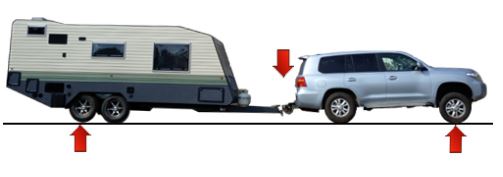
With a twin axle caravan having a noseweight outside of the rated limits can also result in uneven wear of the caravan tyres.
For instance, if the nose weight is too high less weight will be placed on the rear caravan axle.
Hence, the rear caravan axle tyres will experience a lower rate of wear, but the front axle tyres will experience an increased rate of wear.
Furthermore, more weight will be placed on the front caravan axle than intended. Thus, more weight than the recommended caravan tyre pressure. This can lead to potential tyre damage or safety risk (blowout).
The Balancing Act
Effectively, when trying to get the noseweight correct on your caravan, you are playing a balancing act.
Too much weight at the front increases the noseweight, and too much weight at the back reduces the nose weight.
In the example image below, the target noseweight of the caravan is 100kg. 110kg lowers the hitch, and 90kg raises the hitch.
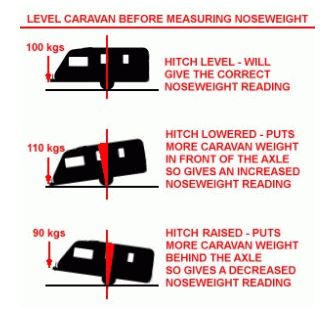
However, I would add a small caveat to the above image. This balancing act is easier to observe on a single-axle caravan than on a twin-axle caravan.
As the pivot point on a twin axle caravan is much wider, its harder to tell visually if there is too much weight at the front or back of the caravan.
Hence the reason why you need to actually measure the noseweight of the caravan.
Practical Caravan Nosweight Guide
If you have the time, the video below from John Wickersham at Practical Caravan does a good job of explaining the implications of an incorrect caravan noseweight.
At the start of the video, John states that some believe it’s okay to have the caravan tilting forward a ‘little’. However, it still shouldn’t exceed the highest-rated nose weight for the caravan.
Pitching & Lateral Instability
As John states in the video, if the caravan’s noseweight is outside its rated tolerances, you can get pitching and also lateral instability.
Pitching is where the caravan effectively bobs up and down as you are towing.
The severity of the pitching will depend on how far off the caravan is from its minimum and maxium rating noseweight rating.
However, the severity of pitching can also change depending on other factors, such as towing speed. An incorrect caravan noseweight is not the primary cause of lateral instability. However, it can be a factor.
There are cases where the noseweight of a caravan is within the correct limits, but other factors are causing sway. I discuss caravan sway and caravan stabilisers in another post.
Caravan Nose Weight Limits
Many caravan manufacturers will provide details on the minimum and maxium nose weights for specific caravans.
However, if you are unable to source that information, both of the caravan clubs do provide advice. You should aim for a noseweight of between 5-7% of the laden weight of your caravan.
Hence, noseweight should not be based on the empty weight of a caravan or its Maximum Technically Permissible Laden Mass (MTPLM).
It should be based on the actual weight of your caravan, including your belongings. However, you obviously still need to be below the MTPLM.
Some people weigh their belongings as they put them into the caravan to produce a total figure and then add that to the caravan’s Mass in Running Order (MRO).
However, the most accurate means to determine the laden weight of a caravan is to take it to a public weighbridge, details below.
5-7% Noseweight Calculation
John shows in the video above how to calculate the noseweight figure using a calculator with a % symbol. However, not all calculators have a percentage symbol, but there is an easy fix, use a decimal.
So using John’s example again of a 1,340kg caravan at 6.25%. You can simply multiply 1340 by 0.0625, and you will arrive at 83.75kg.
How To Check The Noseweight Of Your Caravan
While John from Practical Caravan does discuss how to measure the noseweight in the video above, there is another video you may want to watch from Dan at Meet the Trudgians.
Personally, whenever I’m looking to learn something new, I watch multiple YouTube videos and compare and contrast the advice.
Whichever information/products seem consistent across various videos, that’s the advice I tend to follow.
Noseweight Preferences
Something Dan touches on in his video, which I think is worth emphasising, is his personal noseweight preference. Yes, you need to be within the minimum and maxium rating for the caravan.
However, exactly where your caravan sits in that noseweight range can still affect towing performance.
The ‘ideal’ noseweight with the range is a personal preference for how it feels to tow with your particular tow car.
Heavier cars will be less sensitive to slight changes in nose weight, whereas, with lighter tow cars, you may notice more of an impact. Really the only way you’re going to know is by trial and error.
Using Bathroom Scales
Now, many people (ourselves included) use bathroom scales to measure the noseweight of a caravan. However, you do have to be careful.
Balancing a stick on top of the scales isn’t always the most stable solution. Therefore, just keep that in mind. There are other dedicated noseweight measuring devices which I’ve referenced below.
Rear Washrooms and Wardrobes
We also share the issue that Dan describes with clothes in our wardrobe. We have a large single-axle caravan with a rear washroom (Bailey Pegasus 514).
When towing, placing the clothes in the wardrobe easily takes the nose weight over 100kg. Therefore, during transit, we have to store them in the middle of the caravan.
Cargo Bars
I also agree with Dan, that it is often the case that how you packed the caravan before your visit is often not the same as when you arrive.
Under acceleration and breaking, your possessions tend to wander around the caravan.
And therefore, your ‘ideal’ noseweight when you started your journey may not actually be ideal when you arrive. You could try using a cargo net to help to hold your positions in place.
Alternatively, there are cargo bars which can do a similar job.
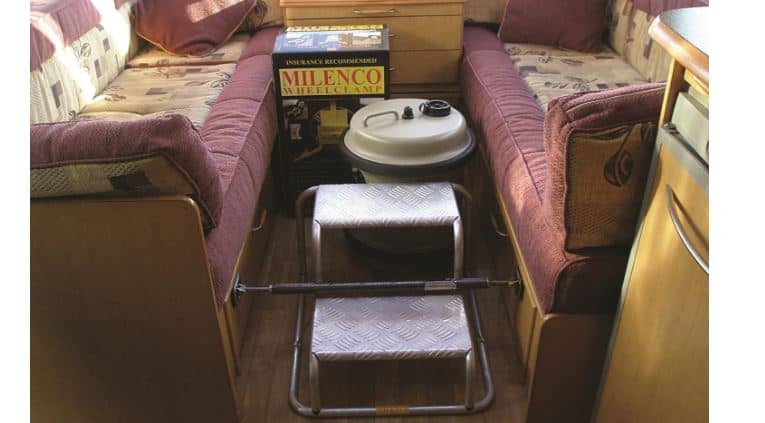
Other Factors Which Influence Caravan Nose Weight
So, as discussed in both of the videos above, how you load your belonging in a caravan has a big effect on noseweight.
However, two other significant factors can create issues, motor movers and gas bottles.
Caravan Motor Movers
If you have a caravan motor mover fitted, and many people do, your noseweight will be affected.
In reference to the ‘balancing act’ above, whether the motor mover is fitted in front or behind the axle, it will either increase or reduce the noseweight.
Therefore, noseweight needs to be a consideration when choosing a motor mover. You may want to look at the most lightweight models.
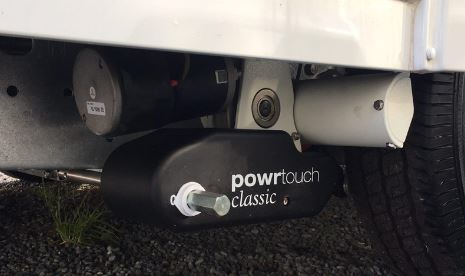
Gas Bottles
If you have a steel Calor gas bottle in the front locker of your caravan, I’m sure you have noticed they carry quite a bit of weight. They actually weigh as much as the liquid gas they contain when full.
Hence, if you are having issues with a high noseweight, you may look into just taking one instead of two gas bottles.
Alternatively, you could also consider swapping for the lightweight Flogas Gaslight bottles, or perhaps a refillable gas bottle.
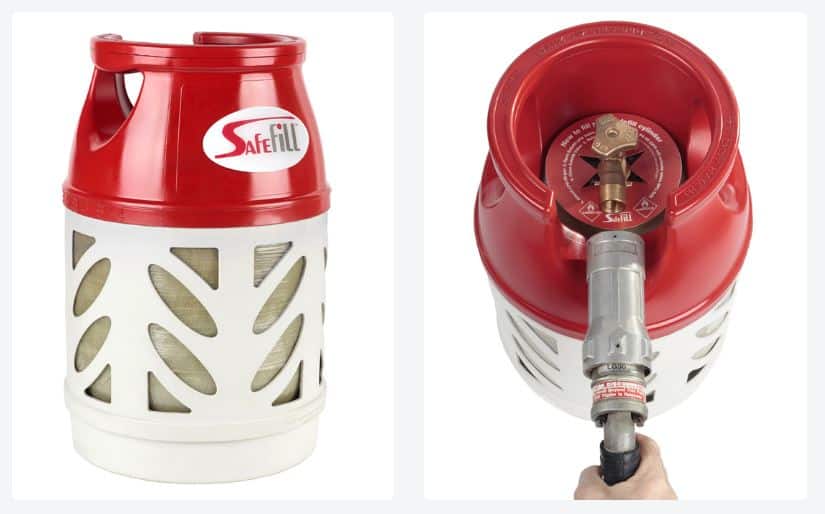
Public Weighbridges For Measuring Your Caravans Laden Weight
As discussed above, to accurately determine if your caravan is safe (and legal) to tow, you should take your caravan to a public weighbridge.
These are located around the UK, and the easiest way to find a public weighbridge no matter where you are is to use Gov.uk.
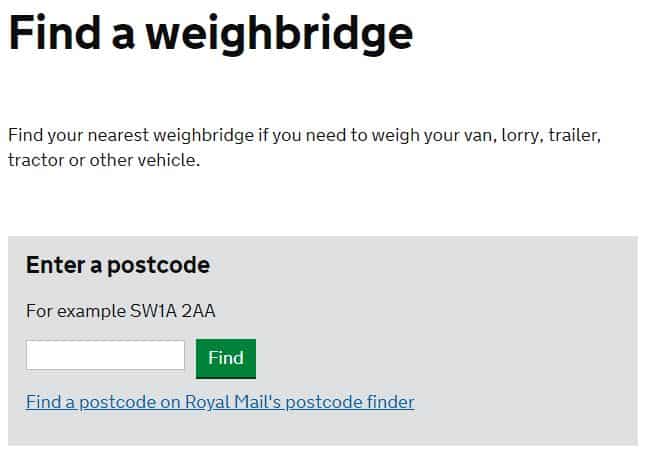
First, you enter the postcode of your current location. The government website will then provide a link to the relevant local authority.
Their own website will then have details and postcodes of the various public weighbridges. I’ve played about with the Gov.uk website with various postcodes/local authorities.
Often along with the location of the public weighbridge, it will also provide you with the price at each location.
You can then be confident that the user payload and the noseweight of your caravan are safe and legal to tow. There are also portable weigh scales available which I discuss in my post how to weigh a caravan.
Methods For Measuring A Caravan Noseweight
So once you know (or have calculated) what your caravan’s noseweight should be, you need to measure it.
If you want to go down the bathroom scale route, that’s fine. Or you could use one of the alternatives below.
Milenco Nose Weight Gauge
Besides using a spare set of bathroom scales, this is probably the most popular option I’ve seen our guests using before they leave our site.
The Milenco gauge can go up to a noseweight of 130kg and is apparently accurate to within 2kg. It comes with its own little bag and easily fits in a front or side caravan locker.

AL-KO Noseweight Jockey Wheel
Its important to check the noseweight of your caravan before you set off on any journey. Using the bathroom scales or Milenco gauge above, it can be a bit of a faff.
The most ‘fancy’ analogue method to be able to measure your caravan’s noseweight is to use the AL-KO caravan jockey wheel. However, its not what you would call ‘cheap’, but it does appear to be well made.
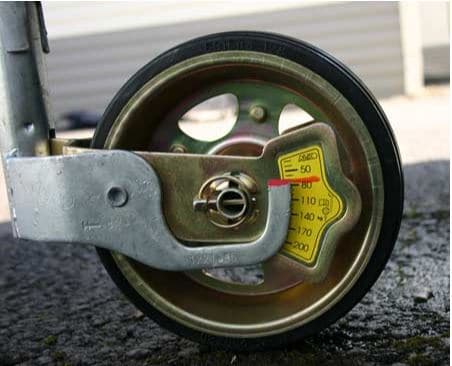
Reich Digital Noseweight Gauge
If you’d prefer to have a digital readout, you could consider the Reich digital noseweight gauge.
It simply fits onto the tow ball of your car, and you then put the caravan hitch on top. It runs on two AAA batteries and can measure up to 115kg with an accuracy of 3%.
Now, what I’m about to type is pretty obvious, but I’m going to type it anyway. You cannot tow with the Reich gauge in place.
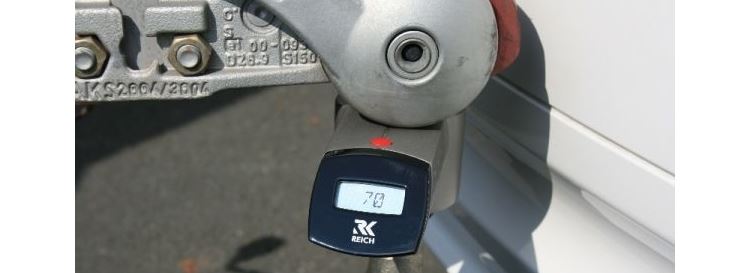
Tow Car Noseweights
We have now pretty comprehensively covered the nose weights of caravans, its now time to look at cars. Checking the manufacturer’s website of your tow car should provide its maxium noseweight limit.
Typically cars which have adaptive and adjustable rear suspension systems can handle higher tow ball nose weights.
There are cars with standard spring rear suspensions which can cope with high nose weights of up to and exceeding 150kg.
The problem with this though is when the spring is under no load they tend to cope poorly with potholes etc, and provide a poor-quality ride. Typically though, the following applies:
- Small to Medium Cars – 50kg to 75kg
- Large Cars & 4x4s – 75kg to 100kg
- Large 4x4s & Pickups – 100kg to 150kg
You will also notice that some tow cars have different noseweight limits depending on their powertrain.
For instance, in my post on electric tow cars, the Mitsubishi Outlander Diesel has a nose weight limit of 100kg, but with the PHEV, its down to 75kg.
Conclusions On Caravan Noseweights
I hope you found the above post useful and you learnt something you didn’t already know about caravan nose weights.
If you want to get the best towing performance from your car and caravan, finding that ‘ideal’ noseweight can go a long way.
I also hope you consider coming to visit us here at Horton Common in the near future. Our hard-standing serviced caravan pitches are award-winning. 🙂
Want To Visit Horton Common? – Book Here


